
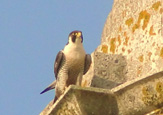
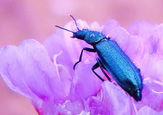
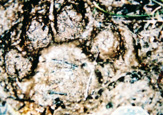
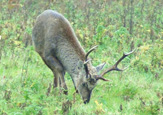
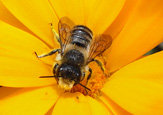
The Trouble with Dogs and Cats
Now I was always a dog lover when I was younger, being brought up with them, they were my companions and best friends. In the countryside most dogs were working animals and had jobs to do. They had a sense of well being and most dogs were happy. There were of course the odd lapdog and mutation. Now though things have become much different.
The rise in dog keeping as grown unchecked over the last twenty years , and seemingly without cause for concern. This in itself is cause for concern.
It is estimated that there maybe over ten million pet dogs in the UK. That is the highest number ever in the history of dog keeping.
It is also estimated that there are over nine million domestic cats kept in the UK.
So what ? you may be asking.
These huge numbers of both species have huge implications on our environment.
Our small island cannot cope with these numbers. Dogs and cats have a detrimental effect on the environment especially the countryside. Millions of cats means millions of deaths of small birds. It does not end at birds.
The problem with cats
A prime example is. On heathland in my area of Dorset, there are many housing estates that cropped up during the nineteen eighties. Hundreds of thousands of homes were built, now with families living in them. Lets say for example that one in ten homes has a family cat. That maybe an average.
One block of natural heathland only two square miles in size will be home to several colonies of sand lizards, common lizards and slow worms. Also adders, smooth snakes and grass snakes. Smooth snakes and sand lizards are endangered species and are protected by law. There will be other rare heathland birds such as nightjars and Dartford warblers. There will be more common bird species all nesting in low heather and gorse. There will be rare insects such as beetles and dragonflies and butterflies and moths. All of these species will need to be managed if they are to have any chance of survival. There will be natural predators taking some of these animals. That is natural and there will be a balance of nature so that no species would naturally succumb to another species.
The problem now is that there maybe thirty or forty cats hunting out on the heath, day and night. These cats do not need feeding and are not hungry so that they do not eat the animals they kill. Catching animals comes naturally by instinct to cats and they will still do it even if they spend much of their time on their owners lap being innocent. Cats are ambush predators, and where they occur naturally as wild animals, they never live in huge numbers, and are always on the move to some extent so that they never out hunt one area. On our small patch of heath, we have thirty animals at least always in the same area, everyday .can you imagine as to what they are doing?. Yes they are stripping the wildlife from this fragile ecosystem. Killing many lizards, one after another. Many birds one after another.
The people who live on the heathland are mainly unaware as to the sensitivity of the precious habitat. Even if they are, they maybe unaware as to what their pets are doing. Even the taking of mice and voles prevents other birds of prey from having a meal. There are many large blocks of fragmented heathland in Dorset, all with these many rare species of wildlife struggling to survive. In effect, the cat owner is responsible for the actions of his or her pets. Allowing them to roam, as is the norm for cats means that they are allowing them to kill protected species. Putting it bluntly, people who keep pet cats on heathlands are responsible for the demise of reptile species, without doubt. Anybody keeping pet cats and allowing them to wander are in effect responsible for allowing many small birds to be killed.
That is what keeping a cat means! A cat is a predator, a killing machine, and ninety nine percent of cats kill. What is being done about it? The answer is nothing. In the meantime, ornithologists and biologists are complaining about the demise of many bird species and are busy delving into answers as to why. It is true that there are many environmental factors and poisoning, shooting on the continent, but surely the keeping of domestic cats must be one of them. Cats were domesticated thousands of years ago to do just that. Kill small animals, yet they were not fed in those times, they were expected to kill and eat mice, rats, snakes and birds.
The sad thing is, is that they are still doing it, and in their millions. And still people are breeding them like there is no tomorrow. Then there are the problems that escalate from that. There are millions of unwanted cats, thousands of feral animals, much cruelty, cats that are not spayed or neutered, and so on. Cats maybe so called domesticated but this in itself does not mean a lot. Cats are independent from humans and they are loners, not evolved to live in colonies. There are many people that obsessively keep many cats. Cats are not allowed to live naturally. Cats should be classed as dangerous wild animals, because they really are. Dangerous wild animals need licences to be kept by humans.
Isn't it about time that we, as a animal loving nation stood up and opened our eyes at the huge problem we have.
The problem with dogs
The problems posed by dogs are far greater than the problem posed by cats.
Dogs give us much pleasure. They are mans best friend. The dogs natural way of living seems to fit in with our lives within a hierarchical basis , and that that is based on mans ability to control and the dogs natural ability to be submissive, but now most dog owners do not train their dogs or let them know as to who is boss. Most dogs these days are simply a fashion commodity. Within mans balance problem, people now love their animals too much, to an extreme. Dogs are not humans and never will be. Dogs are wolves, Just in case anybody did not know that!
There is not much difference between the loving, eager to hunt, submissive, loyal wild animal, and today’s dog except that man has mutated them to horrendous deformed distortions.
This is not just against nature and the evolutions of things but creates such cruelty on the animals concerned. We have genetically modified dogs , yet people do not seem to be moved by it. Maybe it is because we do not eat them! If we were talking maize or tomatoes it would be a different matter.
It seems strange that just because dirty habits that have gone on for many centuries still prevail, it seems except able to allow them to continue.
The real problem with dogs is actually with the humans that make them and keep them. Ten million wolves gallivanting across the towns and countryside of England is not a good thing. Every park, every nature reserve, every beauty spot, every street, every forest is blighted with dog faeces. As if that is not enough, the more serious problems arise with wild animals.
Most people do not consider dog droppings to pose much of a problem except the inconvenience of stepping in foul smelling muck maybe, and some people may have heard that children can catch diseases from it. Yes maybe, but the real issue is, is that tons of it on a sensitive heathland converts the poor acid soils into a rich compost only fit for common grasses and nettles. This means that the heathland plants that have spent hundreds of thousands of years evolving to make use of the acid soils die off. The invertebrates that use these areas go also. So do the reptiles. So do the birds.
It is the sheer volumes of dog muck that are on these places that are destroying them all. not only that, dogs that are fed on canned food drop faeces that contain preservatives and other chemicals that poison the ground, not just heathland. When one enters a heathland site that has a car park , one can not only see hundreds of piles of dog muck, but also see the green swave along the edge of the pathway. This is the common grasses growing out of place. Every heathland area the southern counties of Dorset and Hampshire have this sad reminder. Yet nothing is done about it.
Now I shall tell you about the problems posed by dogs that are allowed off their leads to chase wild animals. In areas rich in wild animals, dogs are allowed to wander. The owners often turn a blind eye as to what they are up to in the confidence that they will return soon. This usually the case but I wonder just how many people knew what their animals were up to as they uncaringly strolled along? They may have spent over half an hour calling it, or them.
The truth is that your dogs would have been chasing deer. Deer that would have been chased several times already that day by other dogs. The deer would have been traumatized and may even have been attacked. The poor deer may have fallen, been injured, may have aborted their own foetus in agony, they may have ran across a road and been hit by a vehicle, they may have even caused a fatal car accident! This last example has actually happened on many an occasion.
And yet the owner was oblivious. I find this so alarming, So thought provoking. People do not seem to care two hoots, while are wildlife is disturbed in such a way each and every day everywhere across the UK. In many areas, ground nesting birds fail to reproduce. Sensitive deer have abandoned traditional rutting and calving grounds. Amphibians have failed to breed in ponds because of the amount of dogs entering them to chase sticks. I could go on. This is the reality of today, and yet still dog owners can keep their animals without licence or responsibility. Of course there are many responsible dog owners out there but the real truth of the matter is, is that if you all were responsible caring people, you would not have dogs in the first place.
The countryside stinks of dogs. And that also stresses out wild animals that instinctively smell wolf.